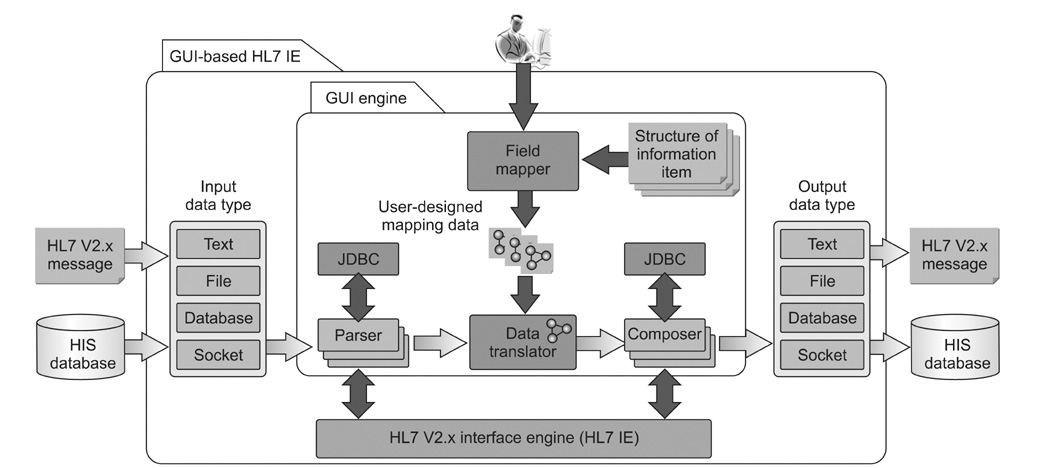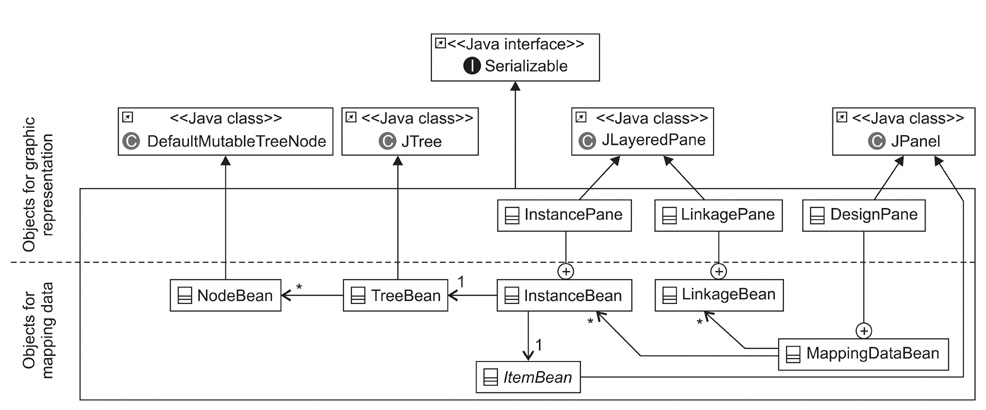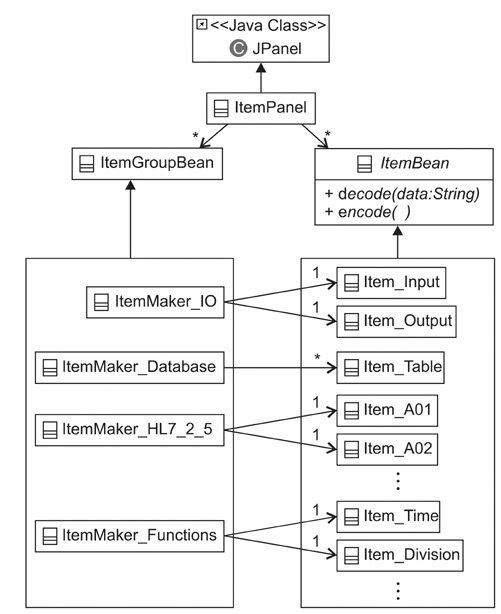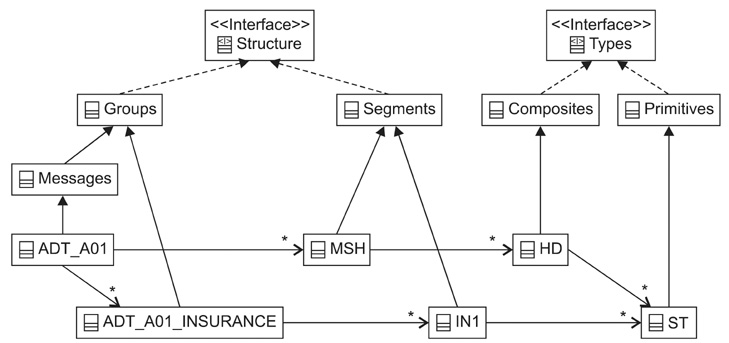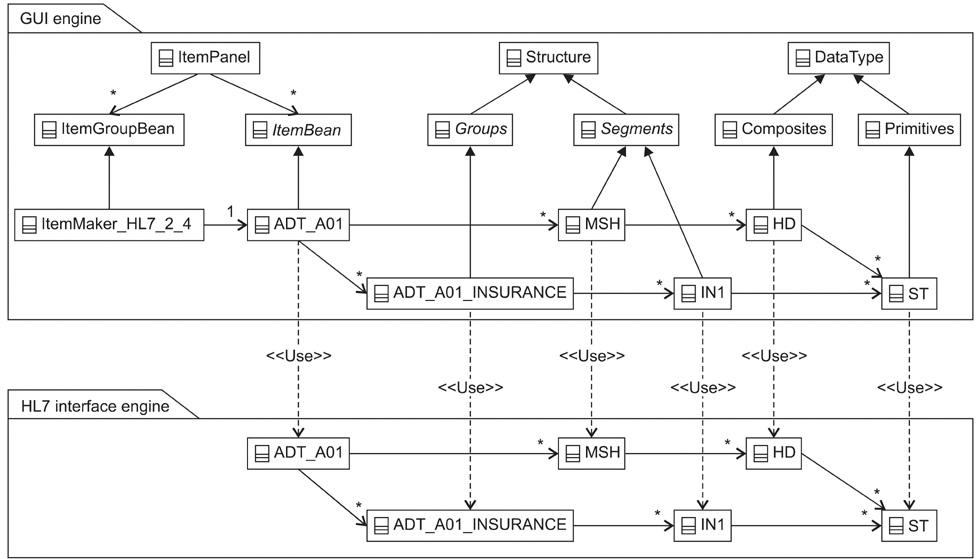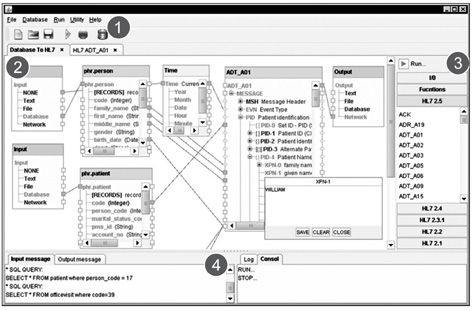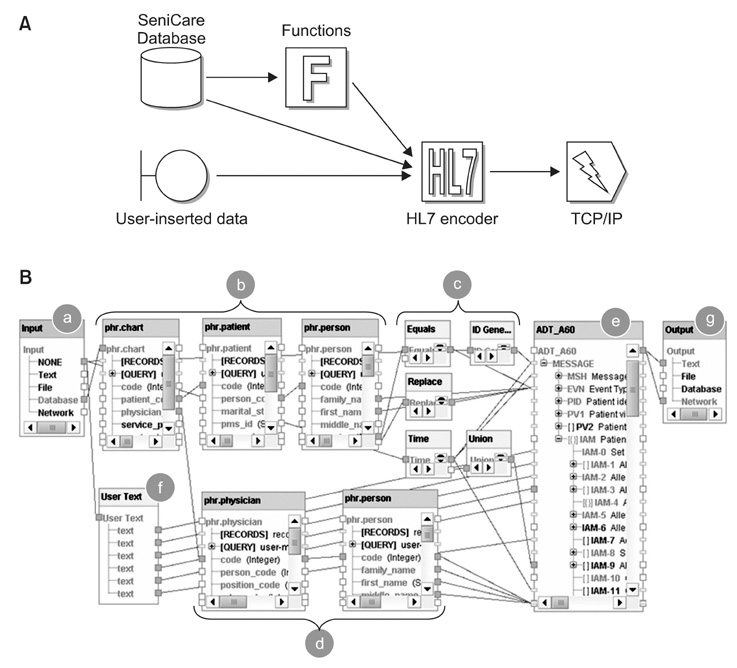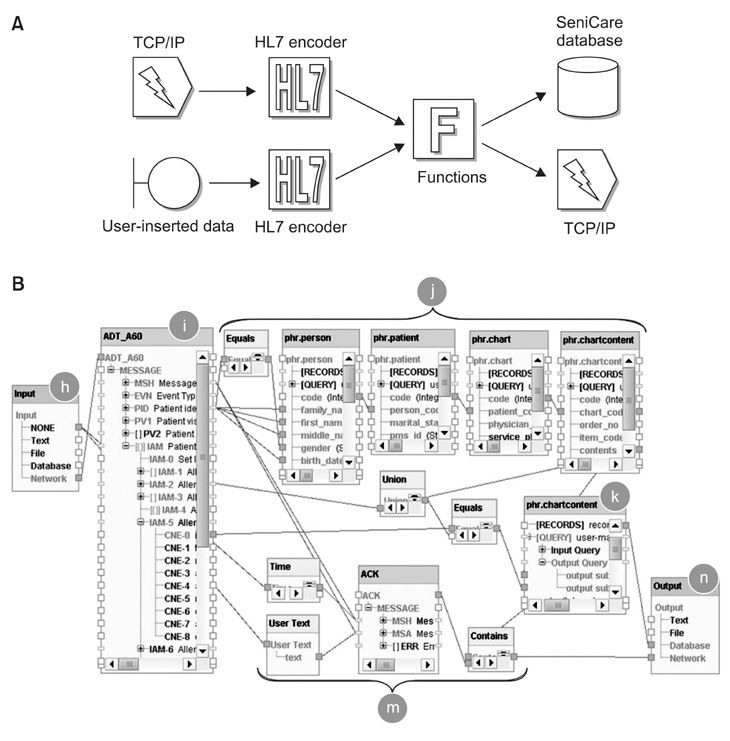Healthc Inform Res.
2011 Dec;17(4):214-223. 10.4258/hir.2011.17.4.214.
The Development of a Graphical User Interface Engine for the Convenient Use of the HL7 Version 2.x Interface Engine
- Affiliations
-
- 1Department of Medical Information Technology, Daegu Haany University, Daegu, Korea.
- 2Department of Medical Informatics, Kyungpook National University School of Medicine, Daegu, Korea. inkeunlee@gmail.com
- KMID: 2284548
- DOI: http://doi.org/10.4258/hir.2011.17.4.214
Abstract
OBJECTIVES
The Health Level Seven Interface Engine (HL7 IE), developed by Kyungpook National University, has been employed in health information systems, however users without a background in programming have reported difficulties in using it. Therefore, we developed a graphical user interface (GUI) engine to make the use of the HL7 IE more convenient.
METHODS
The GUI engine was directly connected with the HL7 IE to handle the HL7 version 2.x messages. Furthermore, the information exchange rules (called the mapping data), represented by a conceptual graph in the GUI engine, were transformed into program objects that were made available to the HL7 IE; the mapping data were stored as binary files for reuse. The usefulness of the GUI engine was examined through information exchange tests between an HL7 version 2.x message and a health information database system.
RESULTS
Users could easily create HL7 version 2.x messages by creating a conceptual graph through the GUI engine without requiring assistance from programmers. In addition, time could be saved when creating new information exchange rules by reusing the stored mapping data.
CONCLUSIONS
The GUI engine was not able to incorporate information types (e.g., extensible markup language, XML) other than the HL7 version 2.x messages and the database, because it was designed exclusively for the HL7 IE protocol. However, in future work, by including additional parsers to manage XML-based information such as Continuity of Care Documents (CCD) and Continuity of Care Records (CCR), we plan to ensure that the GUI engine will be more widely accessible for the health field.
MeSH Terms
Figure
Reference
-
1. Kim HS, Cho H, Lee IK. Development of an electronic claim system based on an integrated electronic health record platform to guarantee interoperability. Healthc Inform Res. 2011. 17:101–110.
Article2. Walker JM, Bieber EJ, Richards F. Implementing an electronic health record system. 2005. London, UK: Springer.3. Henricks WH. "Meaningful use" of electronic health records and its relevance to laboratories and pathologists. J Pathol Inform. 2011. 2:7.
Article4. Kim J, Jung H, Bates DW. History and trends of "personal health record" research in PubMed. Healthc Inform Res. 2011. 17:3–17.
Article5. Lopez DM, Blobel BG. A development framework for semantically interoperable health information systems. Int J Med Inform. 2009. 78:83–103.
Article6. HL7 Standards - master grid [Internet]. Health Level Seven International. c2011. cited at 2011 Aug 16. Ann Arbor, MI: Health Level Seven International;Available from: http://www.hl7.org/implement/standards/v2messages.cfm.7. DICOM homepage [Internet]. Digital Imaging and Communications in Medicine (DICOM). cited at 2011 Aug 16. Available from: http://medical.nema.org.8. Health Level Seven International. Health Level Seven International. c2011. cited at 2011 Aug 16. Ann Arbor, MI: Health Level Seven International;Available from: http://www.hl7.org/implement/standards/cda.cfm.9. Continuity of care document [Internet]. Health Level Seven International. c2011. cited at 2011 Aug 16. Ann Arbor, MI: Health Level Seven International;Available from: http://www.hl7.org/documentcenter/private/standards/cda/igs/HL7_CCD_final.zip.10. ASTM E2369 - 05e2 Standard specification for continuity of care record (CCR) [Internet]. American Society for Testing and Materials (ASTM). cited at 2011 Aug 16. West Conshohocken, PA: ASTM;Available from: http://www.astm.org/Standards/E2369.htm.11. Li JS, Zhou TS, Chu J, Araki K, Yoshihara H. Design and development of an international clinical data exchange system: the international layer function of the Dolphin Project. J Am Med Inform Assoc. 2011. 18:683–689.
Article12. Hapi: the free, open, and best HL7 parser and library for Java [Internet]. University Health Network. c2001-2011. cited at 2011 Aug 16. University Health Network;Available from: http://hl7api.sourceforge.net.13. Tran T. A development of integrated personal health record system to support continuity of care in Vietnam [dissertation]. 2008. Daegu: Kyungpook National University.14. Symphonia messaging & mapping tools [Internet]. Orion Health. c2002-2011. cited at 2011 Aug 16. Santa Monica, CA: Orion Health;Available from: http://www.orionhealth.com/products/symphonia.15. Products: Iguana [Internet]. Interfaceware. c2011. cited at 2011 Aug 16. Ontario, Canada: Interfaceware;Available from: http://www.interfaceware.com/iguana.html.16. MapForce: graphical data mapping, conversion, and integration tool [Internet]. Altova. c2011. cited at 2011 Aug 16. Beverly, MA: Altova;Available from: http://www.altova.com/mapforce.html.
- Full Text Links
- Actions
-
Cited
- CITED
-
- Close
- Share
- Similar articles
-
- Implementation of HL7 Interface Engine for Unifying Medical Records
- Development a New HL7 Interface Engine for Large-size Messages which Include Image Data based on Tree Structure and Streaming Algorithm
- Introduction of the Communication Standard Health Level Seven and HL7 Korea
- Development of Biosignal Telemonitoring System Based on HL7 and MFER Standard
- CpG Islands Detector: a Window-based CpG Island Search Tool

